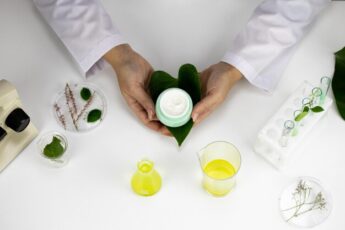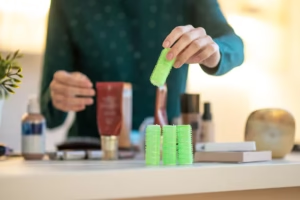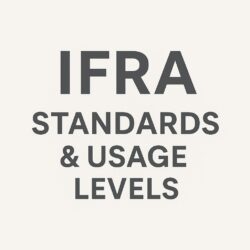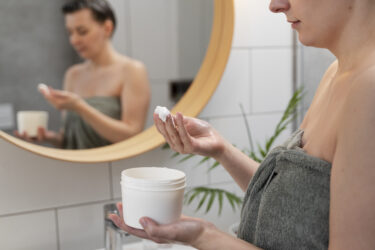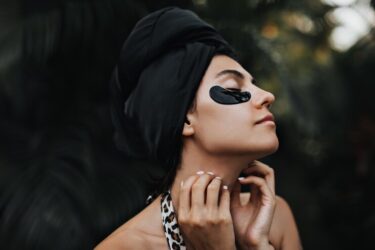Preservatives in Cosmetic:
Have you ever wondered why your favorite moisturizer stays fresh for months? The silent hero here is preservatives in cosmetic. But not all preservatives are created equal. Choosing the wrong one can lead to product spoilage, skin irritation, or even regulatory nightmares. In this guide, we’ll break down everything you need to know about preservatives in cosmetics—from synthetic to natural alternatives—and teach you how to pick the perfect option for your formulations. Let’s dive in!

Why Preservatives in Cosmetic are Important?
Preservatives are like the security guards of your cosmetic products. Without them, your creams, lotions, and serums would become breeding grounds for bacteria, mold, and yeast. Here’s why they’re non-negotiable:
- Preventing Microbial Growth
Why It Matters:
- Water-based cosmetic products, such as lotions, shampoos, and toners, are highly prone to microbial contamination due to their moisture content.
- Daily exposure to air, fingers, and humid environments increases the risk of bacterial and fungal growth, which can spoil the product and pose health risks.
How Preservatives Help:
✔ Prevent microbial growth by inhibiting bacteria, mold, and yeast that can thrive in cosmetic formulations.
✔ Ensure product safety, reducing the risk of skin infections or irritation caused by contaminated products.
✔ Preserve formula integrity, keeping the product stable and effective for its intended shelf life.
Extending Shelf Life
Why It Matters:
- Without preservatives, cosmetic products would spoil within days or weeks, making them unsafe for use.
- Consumers expect personal care products to remain stable for several months to years without losing effectiveness.
How Preservatives Help:
✔ Prevent spoilage caused by bacterial contamination and oxidative degradation.
✔ Maintain product stability, ensuring consistent texture, scent, and performance over time.
✔ Reduce waste, allowing consumers to use products safely without frequent replacements.
Ensuring User Safety
Why It Matters:
- Contaminated products can cause skin irritation, breakouts, or even serious infections if harmful microbes proliferate.
- Eye creams, mascaras, and facial serums are particularly high-risk due to their application near sensitive areas.
How Preservatives Help:
✔ Reduce the risk of skin and eye infections by preventing the growth of harmful bacteria.
✔ Protect users from dangerous pathogens like Staphylococcus and Pseudomonas, which can cause severe reactions.
✔ Ensure hygiene and product safety, allowing safe daily application without health concerns.
By incorporating effective preservatives, cosmetic products remain safe, stable, and free from harmful contamination, ensuring a high-quality experience for users.
Types of Preservatives in Cosmetics
Preservatives fall into two major categories: synthetic (lab-made) and natural (plant- or mineral-derived). Each has its own strengths and limitations.
Synthetic Preservatives: The Heavy Hitters
These are scientifically formulated preservatives known for their broad-spectrum effectiveness and long-term stability.
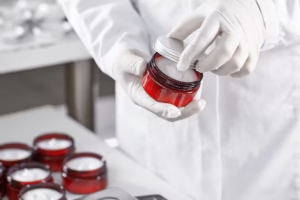
Parabens
- Examples: Methylparaben, Propylparaben
- Pros: Cost-effective, highly effective against bacteria and fungi, well-studied.
- Cons: Controversial due to concerns about hormone disruption, though regulatory bodies like the FDA and EU SCCS deem them safe in low concentrations.
Phenoxyethanol
- Pros: Gentle, suitable for sensitive skin, effective against bacteria.
- Cons: Not ideal for “100% natural” claims as it is synthetically derived.
Formaldehyde Donors
- Examples: DMDM Hydantoin, Imidazolidinyl Urea
- Pros: Offer long-lasting antimicrobial protection.
- Cons: Can release small amounts of formaldehyde, which may cause irritation in sensitive individuals.
Natural Preservatives: The Eco-Friendly Alternatives
Natural preservatives are derived from plants, essential oils, or organic compounds, making them popular choices for clean beauty brands. However, they often require higher concentrations or synergistic blends to match the efficacy of synthetic preservatives.

- Lactobacillus Ferment
✔ Pros:
- A probiotic-based preservative with antimicrobial properties.
- Inhibits the growth of harmful bacteria and helps maintain a balanced microbiome.
- Suitable for mild and natural formulations.
❌ Cons:
- May require higher concentrations or additional preservatives for full protection.
- Limited effectiveness in high-water formulations.
- Sodium Benzoate & Potassium Sorbate (Nature-Identical)
✔ Pros:
- Mild and widely accepted for natural formulations.
- Effective against bacteria, yeast, and mold in water-based products.
- Works well in low-pH formulations (below 5.5), such as toners and serums.
❌ Cons:
- Ineffective in high-pH formulations like some lotions and creams.
- Often used in combination with other natural antimicrobials for enhanced efficacy.
- Ethylhexylglycerin (Plant-Derived Glyceryl Ether)
✔ Pros:
- A mild antimicrobial booster derived from vegetable glycerin.
- Enhances the performance of other preservatives like phenoxyethanol.
- Non-irritating and skin-conditioning.
❌ Cons:
- Not a standalone preservative—must be paired with stronger antimicrobials.
- More of a preservative booster than a broad-spectrum preservative.
- Glyceryl Caprylate & Glyceryl Undecylenate
✔ Pros:
- Derived from coconut oil and castor oil, offering natural antimicrobial properties.
- Works well in emulsions (lotions, creams) to prevent microbial growth.
- Provides additional moisturizing benefits.
❌ Cons:
- Best used as a preservative booster rather than a standalone solution.
- May require lower pH for optimal performance.
- Caprylhydroxamic Acid (CHA)
✔ Pros:
- Amino acid-derived alternative to traditional preservatives.
- Chelates iron, making it harder for bacteria and mold to grow.
- Effective in broad pH ranges (4–7).
❌ Cons:
- Works best when paired with other preservatives for full-spectrum protection.
- Can be expensive compared to synthetic options.
Want to explore a natural preservative in detail? Check out Evonik’s Dermosoft® G 3 CY MB, a multifunctional ingredient offering broad-spectrum antimicrobial protection for natural formulations.
Common Preservatives in Cosmetic
The table below lists some common types of preservatives used in cosmetic formulations, their characteristics, and examples.
| Preservative Type | Characteristics | Effective Against | Recommended End-Use Percentage |
| Parabens | Effective against a wide range of microorganisms; good stability in a variety of formulations | Bacteria and molds | 0.8% – 1.0% |
| Phenoxyethanol | Relatively low cost; broad-spectrum efficacy; stable in a wide pH range | Bacteria, yeasts, and molds | 0.5% – 1.0% |
| Benzyl Alcohol | Compatible with a range of cosmetic ingredients; mild, non-irritating to the skin | Bacteria and yeasts | 1.0% – 2.0% |
| Formaldehyde Releasers | Suitable for long-lasting preservation; commonly used in many personal care products | Bacteria and fungi | Varies (per manufacturer) |
| Sorbic Acid | Often used in combination with other preservatives; effective at acidic pH | Molds, yeasts, and some bacteria | 0.1% – 1.0% (typically) |
| Benzoic Acid | Suitable for pH levels between 4 and 6; compatible with a wide range of cosmetic ingredients | Yeasts and molds | 0.1% – 0.8% (typically) |
| Ethylhexylglycerin | Works best in slightly acidic formulations; acts as a co-preservative to enhance antimicrobial activity of other preservatives; skin conditioning | Bacteria, yeasts, and molds (with phenoxyethanol) | 0.5% – 2.0% |
| Caprylyl Glycol | Suitable for leave-on and rinse-off products; hydrating and skin-conditioning properties | Bacteria, yeast, and molds | 0.2% – 1.0% |
| Sodium Benzoate | Compatible with a variety of cosmetic formulations; widely used in food and cosmetics; ideal for water-based products | Yeasts and molds | 0.1% – 0.8% |
| Potassium Sorbate | Enhances shelf life of emulsions and creams; commonly used with sodium benzoate; ideal for water-based products | Molds, yeasts, and some bacteria | 0.15% – 0.5% |
| Natural Extracts and Blends | Suitable for natural and organic cosmetics; includes botanical extracts like rosemary, grapefruit seed, etc.; often used in synergy with other preservatives | Depends on the combination preservative | Varies (per manufacturer) |
How to Choose the Right Preservative:
Selecting a preservative isn’t one-size-fits-all. The choice depends on factors like product type, pH, and consumer preference.
Step 1: Understand Your Product’s Needs
- Water-based products (lotions, serums) need stronger preservation than anhydrous (oil-based) products.
- Packaging matters—airless pumps reduce contamination risk compared to jars.
Step 2: Check pH Compatibility
- Some preservatives only work within a specific pH range.
- Example: Parabens are most effective at pH 4–8, while sodium benzoate works best below pH 5.5.
Step 3: Assess Ingredient Interactions
- Oils and emulsifiers can impact preservative efficacy.
- Some ingredients (e.g., vitamin C, clay, natural extracts) may require additional preservation support.
Step 4: Comply with Global Regulations
- EU, FDA, and ASEAN regulations vary—some preservatives allowed in one region may be restricted elsewhere.
Step 5: Consider Consumer Preferences
- If targeting the “clean beauty” market, opt for phenoxyethanol or natural blends.
- Some consumers avoid parabens due to misinformation, so marketing-friendly alternatives may be needed.
Step 6: Conduct Microbial Challenge Testing
- Challenge testing ensures that the preservative can prevent microbial growth under real-world conditions.
- Common tests include USP <51> (Antimicrobial Effectiveness Test) and ISO 11930.
Common Mistakes to Avoid
- Overdosing or Underdosing
- Too much preservative = risk of skin irritation.
- Too little preservative = microbial contamination.
- Always follow recommended usage levels set by regulatory bodies.
- Ignoring pH Levels
- Incorrect pH can make the preservative ineffective.
- Always test and adjust pH compatibility before finalizing a formulation.
- Skipping Stability & Microbial Testing
- Assuming a preservative works without testing can lead to spoilage.
- Stability and microbial challenge tests are mandatory for safe, effective products.
- Misleading “Preservative-Free” Claims
- Even “natural” products require some form of preservation.
- If not using traditional preservatives, alternatives like airless packaging, ethanol, or pH control must be used.
By choosing the right preservative and following best formulation practices, brands can ensure that their products remain safe, stable, and effective throughout their shelf life.
FAQs: Preservatives in Cosmetic
- Are preservatives necessary in cosmetics?
Yes! Unless your product is anhydrous (oil-only) or single-use, preservatives prevent dangerous microbial growth.
- What are the safest preservatives for sensitive skin?
Phenoxyethanol and potassium sorbate are gentle options. Always patch-test!
- Can natural preservatives replace synthetic ones?
Sometimes, but they often require higher concentrations or complementary methods (e.g., refrigeration).
- How do I test preservative effectiveness?
Use challenge testing (lab-based) or preservative efficacy testing (PET).
- What’s the shelf life of preservative-free products?
Typically 1–3 months if water-based. Store in cool, dry places to extend longevity.
Final Thoughts
Choosing the right preservative is a blend of science and strategy. Whether you’re formulating a luxury serum or a budget-friendly lotion, prioritize safety, compliance, and user trust. When in doubt, consult a cosmetic chemist—they’ll help you navigate the tricky waters of preservation. Now go forth and create products that are as safe as they are stunning!
Ready to perfect your formula? Share your preservative questions below, and we’ll tackle them in our next post! 🧴✨
Want to learn more about cosmetic formulations? Discover the role of emulsifiers in cosmetics and how they contribute to product stability. Read more here: Emulsifiers in Cosmetics.
